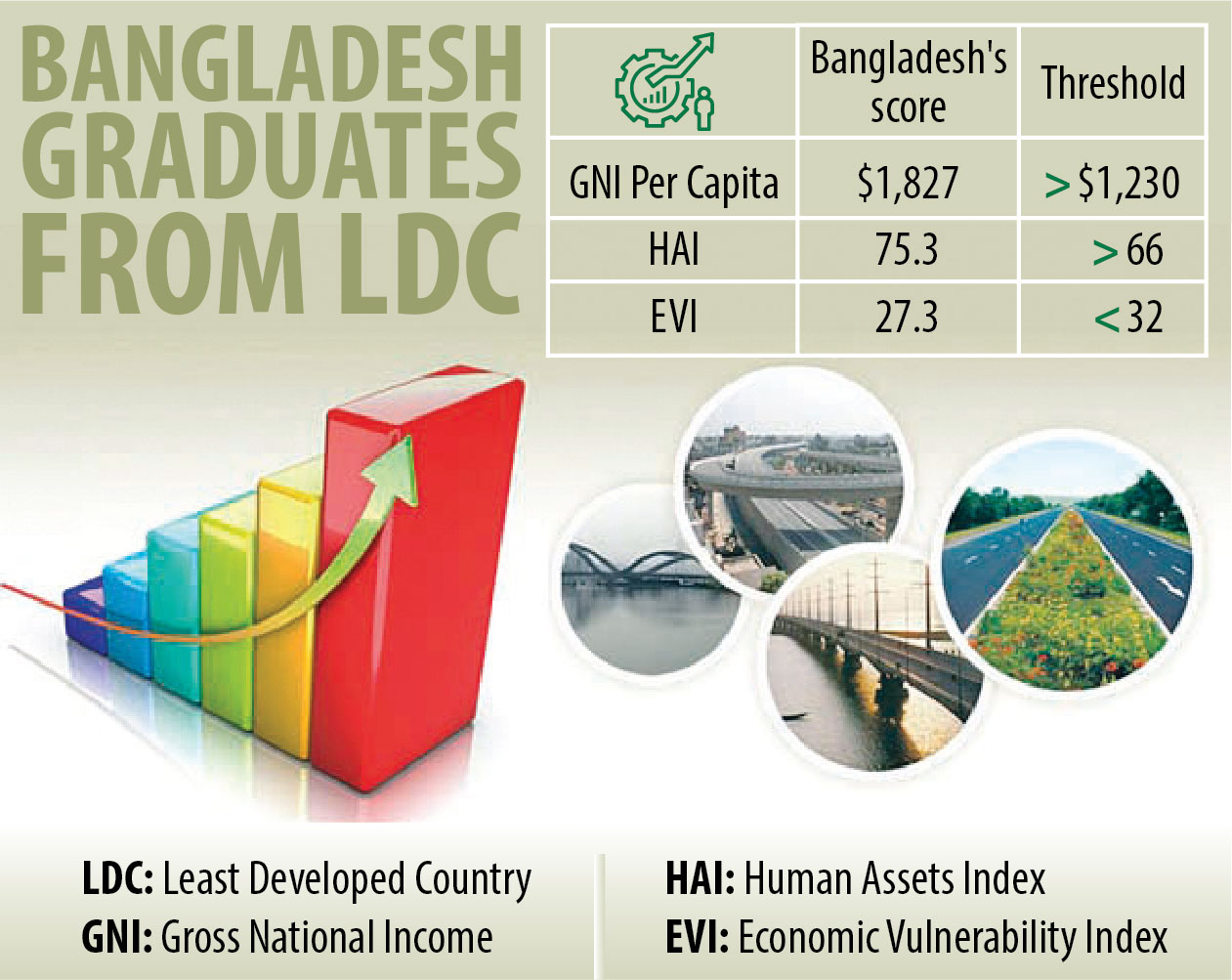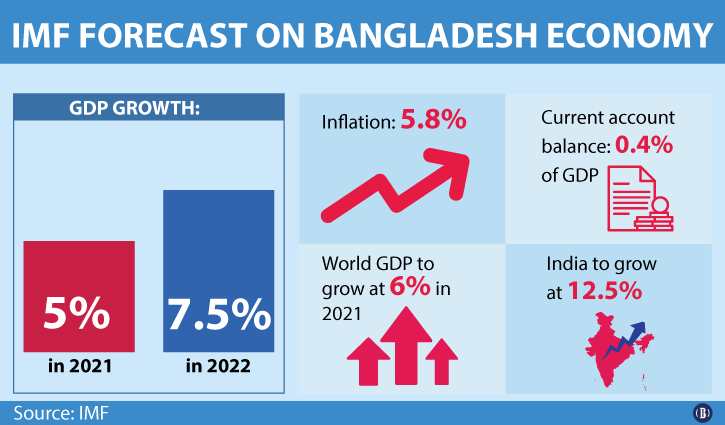Business
Bangladesh’s Economic Growth Will Surpass Denmark, Hong Kong & Singapore in 10 Years

Bangladesh Could Overtake The World’s Largest Economies By 2050: Study
Economists are predicting that Bangladesh will pass Denmark, Singapore, and Hong Kong in terms of GDP by 2025. The Bangladeshi economy is growing at 6-8% per year, while the other countries are only growing at rates between 1-2%.

These numbers may seem far-fetched, but it is not impossible for this to happen. If Bangladesh can maintain an annual growth rate of 6-8% and if the other countries maintain their current growth rates, then there is no question that Bangladesh would surpass these countries in the next ten years.


| Population | |
|---|---|
| GDP | |
| GDP rank | 37th (nominal, 2021)31st (PPP, 2021) |
| GDP growth | 7.9% (17/18) 8.2% (18/19e)5.2% (19/20f) 6.8% (20/21f) |
| GDP per capita | |
| GDP per capita rank | 149th (nominal, 2021)130th (PPP, 2021) |
Bangladesh can become the next India, PwC predicts in a report, and the country is expected to experience a ‘comfortable’ growth rate of 7.5% over the next two decades.
5 Reasons Why The Bangladeshi Economy Will Soon Be the World’s 28th Largest by 2030

Bangladesh has the potential to become the world’s 23rd largest economy by the year 2050 and will be the 28th largest economy by the year 2030. In the next few decades, the world economy will experience a massive shift from West to East. The U.S. and Europe have been on a steady decline since the 2008 economic crash while Asia has been on a continuous rise. A new report by PricewaterhouseCoopers (PwC) predicts that by 2050, China will be leading the world’s economy with India right behind
- Bangladesh: a country on the rise
The Bangladesh economy is expected to grow more than $500 billion by 2025, which would make it larger than Norway and the Philippines. It’s also close behind some very wealthy countries like UAE (a whopping 480 billion) or Saudi Arabia ($411).
Bangladesh has one of the lowest levels of financial inclusion in South Asia, with only 41% of adults having bank accounts and just 3% using formal credit products. However, this could be changing soon as the number of mobile phone subscriptions continues to grow at
With GDP per capita expected to be more than $2,994 by 2025, this will make it wealthier than Denmark and Singapore by 2020, according to World Bank projections. The country’s economy is primarily driven by its garment industry which was worth over $22 billion in 2014-2015, or 80% of all exports from Bangladesh. As factory wages increase across China and India due to demand for labor shifting away from south-east Asia, Bangladesh could see increased foreign investment as companies move their manufacturing operations there for cheaper production costs.
High-income countries are usually considered to be those with a per capita GDP of over $25,000. But these numbers don’t tell the whole story. Bangladesh has a combined population and land area smaller than France or Texas – yet it is set to surpass Norway in terms of economic size by 2023. This is largely due to the fact that Norway’s economic output relies heavily on oil exports, which have been plummeting in value since 2014.
Bangladesh also produces more garments than any other developing country – giving many women a way out of poverty. This growth can be attributed to factors such as foreign direct investment from countries like Japan and China, which have increased competition for garment exports from Bangladesh since 2005. Additionally, Bangladesh has benefited from low-cost skilled laborers who come at a price much lower
Bangladesh Foreign investment
Bangladesh has made significant improvements to its investment climate in recent years. Foreign investors have been drawn to Bangladesh because of its low wages and large population of skilled workers at competitive rates. This is because foreign corporations are moving away from China, which has the world’s most expensive labor force. Bangladesh now ranks as the third-lowest cost country for manufacturing, making it an attractive site for relocation.
The World Bank Group found that Bangladesh increased its level of foreign direct investment by five percentage points between 2011 and 2015–the fastest growth rate among low-income countries. The World Bank Group also reported that Bangladesh saw a decrease in poverty rates by 10 percent over the same time period, with some reports claiming this was due to increasing FDI activity rather than other social programs.
Additionally, there have been many positive changes on the political front since 2009
A major factor contributing to this projection is population growth. With a population of 160 million people, Bangladesh has more than twice as many citizens as any country listed above, which means they have access to it.
In the past decade, Bangladesh has seen a rapid economic growth of 7.1%, making it one of the fastest-growing economies in Asia. This blog post explores what this means for Bangladeshi citizens – how have they benefited so
The article is an analysis of how Bangladesh will be the world’s 32nd largest GDP by 2050. It examines what it needs to do in order to achieve this and discusses some potential repercussions, both positive and negative. One major factor that has made this possible is increased exports, which have been driven by garment manufacturing. The author argues that if Bangladesh can maintain its current economic growth rates, then it will surpass Denmark as well as Singapore and Hong Kong’s economies before 2020.
The World Economic ForumBy 2030, Bangladesh will be the 24th largest economy.
